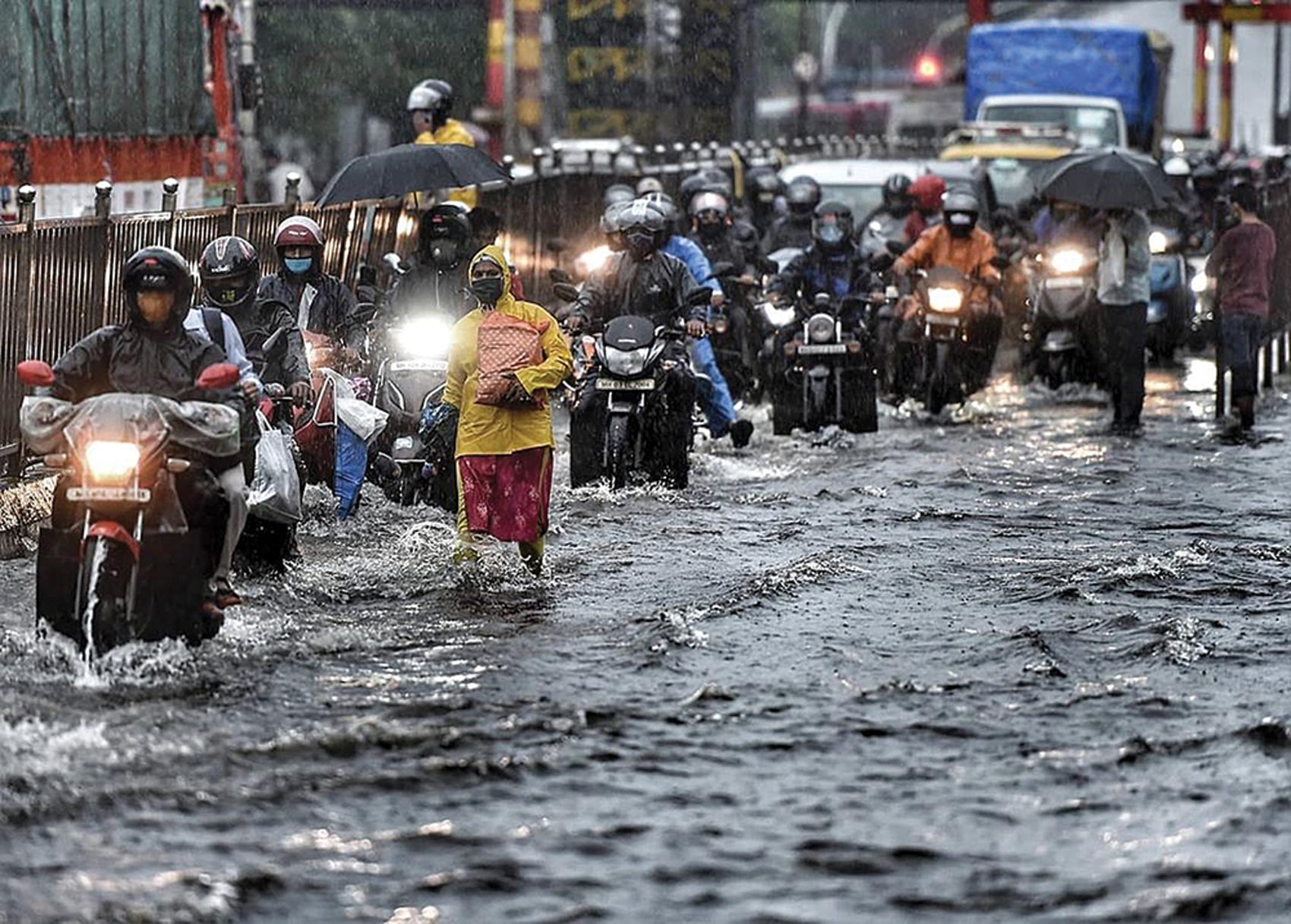Climate Watch - April 2022
First published in Sanctuary Asia,
Vol. 42
No. 4,
April 2022
Compiled by Francesca Cotta
What is the IPCC report?
The Intergovernmental Panel on Climate Change is an intergovernmental organisation of the United Nations made up of 195 member states. Its role is to provide rigorous, comprehensive assessments of the state of the climate crisis and includes contributions from thousands of leading scientists around the world, meticulously reviewed by hundreds of scientists. Each “assessment report” is prepared over a period of five to seven years. The current and sixth report has been published in four parts. The second and latest report, released on February 28, 2022, evaluates the impact of, and the adaptation and vulnerability to the effects of the climate crisis on human societies. It “recognises the interdependence of climate, ecosystems and biodiversity, and human societies and integrates knowledge more strongly across the natural, ecological, social and economic sciences than earlier IPCC assessments”.
Many firsts
The latest report contains many firsts. For the first time, there has been an assessment of regional and sectoral impacts of the climate crisis, including granular data on risks to and vulnerabilities of the world’s mega-cities. It is also the first time an IPCC report directly addresses the health impacts of the crisis – from increasing vector-borne and water diseases, infant mortality, malnutrition, and even mental health. The authors of the report recommend turning to adaptation and solutions by indigenous people, not only because they are often the most vulnerable to climate-related disasters but also because they have developed, over thousands of years, crucial expertise of land and water management, which are region-specific. For the first time in IPCC history, every chapter includes inputs from and a focus on indigenous people.
A 1.50C threshold; the window is closing fast
Scientists have warned of multiple disasters – far more frequent and more damaging than previously understood – caused by climate change within the next two decades, even if serious, concerted global efforts are taken to reduce greenhouse gas emissions. The report highlights the major unavoidable disruptions that 1.10C of heating are already causing to health, food security and other factors contributing to the stability of human life and to the environment at large. Further rise in temperatures would make adaptation even more challenging. Over 3.5 billion people, (more than 45 per cent of the global population) are vulnerable to climate change. Antonio Guterres, Secretary-General of the United Nations called the report “an atlas of human suffering and a damning indictment of failed climate leadership.”
Every tenth of a degree of additional warming will heighten the threats to people, species and ecosystems. Even at 1.50C of warming, several glaciers around the world will either melt entirely or lose most of their mass; an additional 350 million people will experience water scarcity by 2030 and around 14 per cent of terrestrial species will face high risks of extinction. The 2021 IPCC report warns that we will reach this temperature by 2050 regardless of what we do now. If warming crosses 1.50C even for a short duration of time, much more severe, often irreversible effects of climate change will occur.
Some communities and ecosystems are already beginning to reach the limits of possible adaptability. In some areas, these limits are “soft” – effective adaptation measures exist, but inequality, conflict, weak governance, and lack of fund access stand in the way of their implementation, making it difficult for communities to respond to a rapidly changing climate. In other regions, people and ecosystems have already hit or are fast approaching “hard” limits to adaptation, where climate impacts are so extreme that no existing adaptation measures can effectively prevent losses and damages. These losses and damages will only multiply as global temperatures soar. Richer countries failing to provide the funds promised to developing countries for adaptation measures is a huge impediment to timely action in the most vulnerable regions.

Ecosystem-based adaptation that focuses on protection, restoration and sustainable management of ecosystems, rewilding and more sustainable agricultural practices can decrease climate risks while also delivering co-benefits for biodiversity, livelihoods, health, food security and carbon sequestration. Photo: Public Domain/Nadir Hashmi.
What can be done?
The report states that efforts today are still primarily isolated – ignoring the compounding effects of various climate-related disasters – reactive and small-scale, with most looking only at current impacts or short-term risks.
The latest IPCC report analyses climate adaptation measures’ feasibility, effectiveness, and potential to improve healthcare or alleviate poverty. It highlights measures such as increasing our healthcare investments and integrating climate adaptations into social protection programmes as one of the most effective uses of funds to reduce climate risks.
For far too long, mitigation and adaptation measures have been addressed separately and have competed for a small share of the budget to tackle climate change. Maladaptations, which happen when sectors and risks are tackled in isolation, are also a setback to meaningful progress. A new approach, which integrates both mitigation and adaptation, called ‘climate resilient development’ has also been recommended. The report stresses on the need for comprehensive, inclusive, long-term climate-resilient development and warns that there is a rapidly narrowing window of opportunity to effectively implement it.
Ecosystem-based adaptations
The report also assesses future adaptation options and their feasibility. Ecosystem based Adaptation (EbA), listed Under ‘Land, Ocean and Ecosystems Transition’, is recognised internationally under the Convention on Biological Diversity. Effective Ecosystem-based Adaptations reduces a range of climate change risks to people, biodiversity and ecosystem services with multiple co-benefits. The effectiveness of EbA, however, declines with rising global heating.
This adaptive approach includes a wide range of strategies, from the protection, restoration and sustainable management of ecosystems and rewilding, to more sustainable agricultural practices like integrating trees into farms, increasing crop diversity and planting trees in pastures. Ecosystem-based adaptation can decrease climate risks that many people already face, including droughts, extreme heat, floods and fires, while also delivering co-benefits for biodiversity, livelihoods, health, food security and carbon sequestration. Meaningful collaboration with indigenous people and local communities is integral to the success of EbA, as is making sure they’re designed to account for how future global warming will impact our ecosystems.

India is highly vulnerable to sea-level rise, with around 35 million people at risk of annual coastal flooding by 2050 and around 45-50 million at risk by 2100 in a high-emission scenario. Photo: Public Domain/David Unger.
Implications for India
The report says that India is one of the most vulnerable climate hotspots, and is likely to become a country where rising heat and humidity (the combined measure of which is referred to as ‘wet-bulb temperature’) surpasses human survivability. A wet-bulb temperature of 310C is dangerous for humans, while a value of 35°C for more than around six hours could prove to be fatal. Patna and Lucknow are expected to cross wet-bulb temperatures of 350C, and most Indian states and cities could reach dangerous levels by 2100. The report warns of deadly heat waves, with Ahmedabad being particularly at risk. Our food production and security will also be severely affected by the impacts of climate change.
India is also highly vulnerable to sea-level rise, with around 35 million people at risk of annual coastal flooding by 2050 and around 45-50 million at risk by 2100 in a high-emission scenario. Mumbai is at high risk of sea-level rise and flooding. The Ganga and Brahmaputra river basins are particularly likely to experience increased flooding.
Climate change has already forced 33 per cent of Indians to live with water scarcity, but this figure could jump to 40 per cent by 2050.
Worryingly, adaptation plans for Indian cities at present only consider one or two risks while not addressing the compounding effects of disasters like tropical cyclones becoming concurrent with heatwaves and droughts. The report also warns that as the risks to survival increase with rising temperatures, the capacity of communities, particularly the marginalised and low-income ones, to adapt will decrease.



